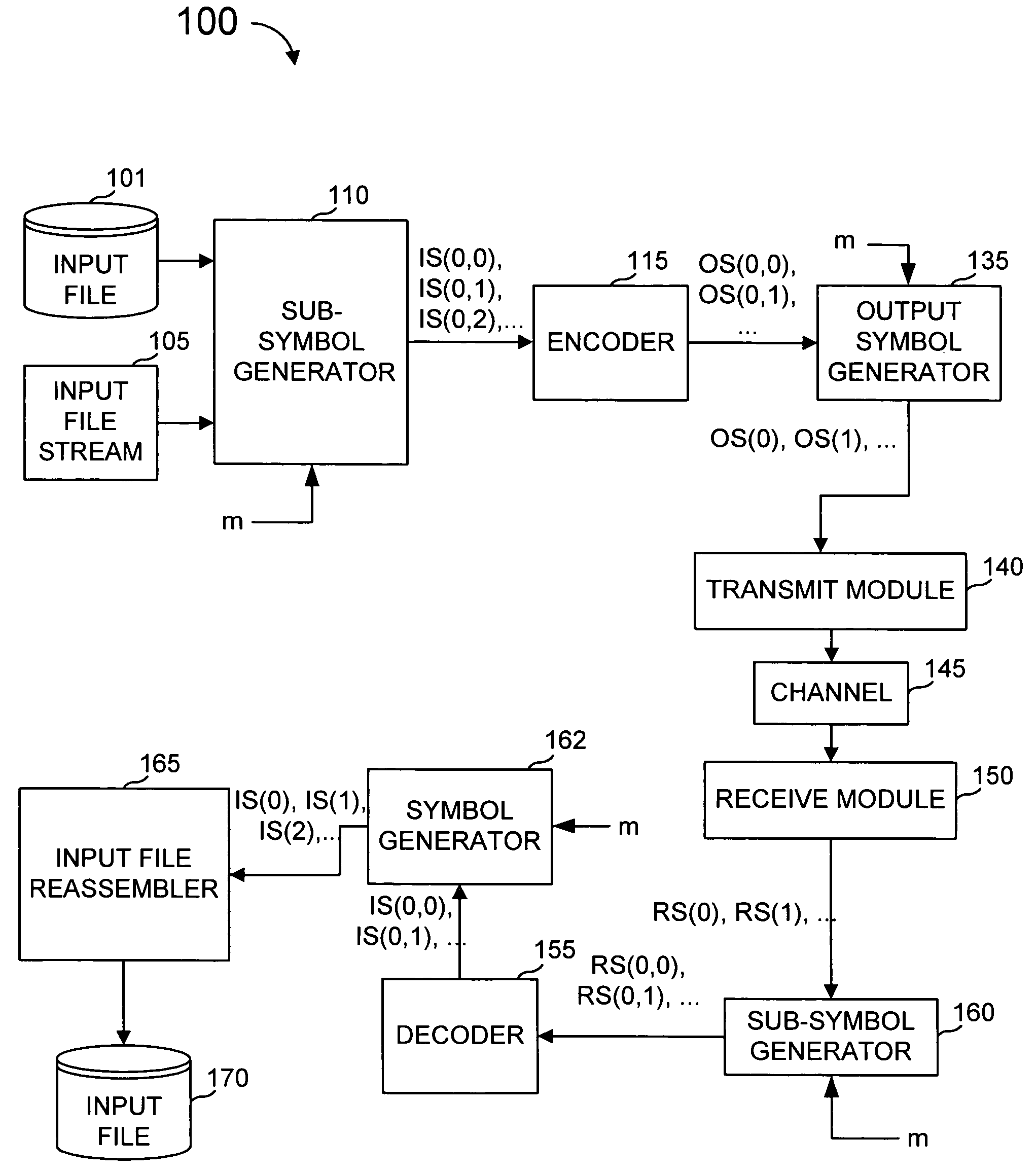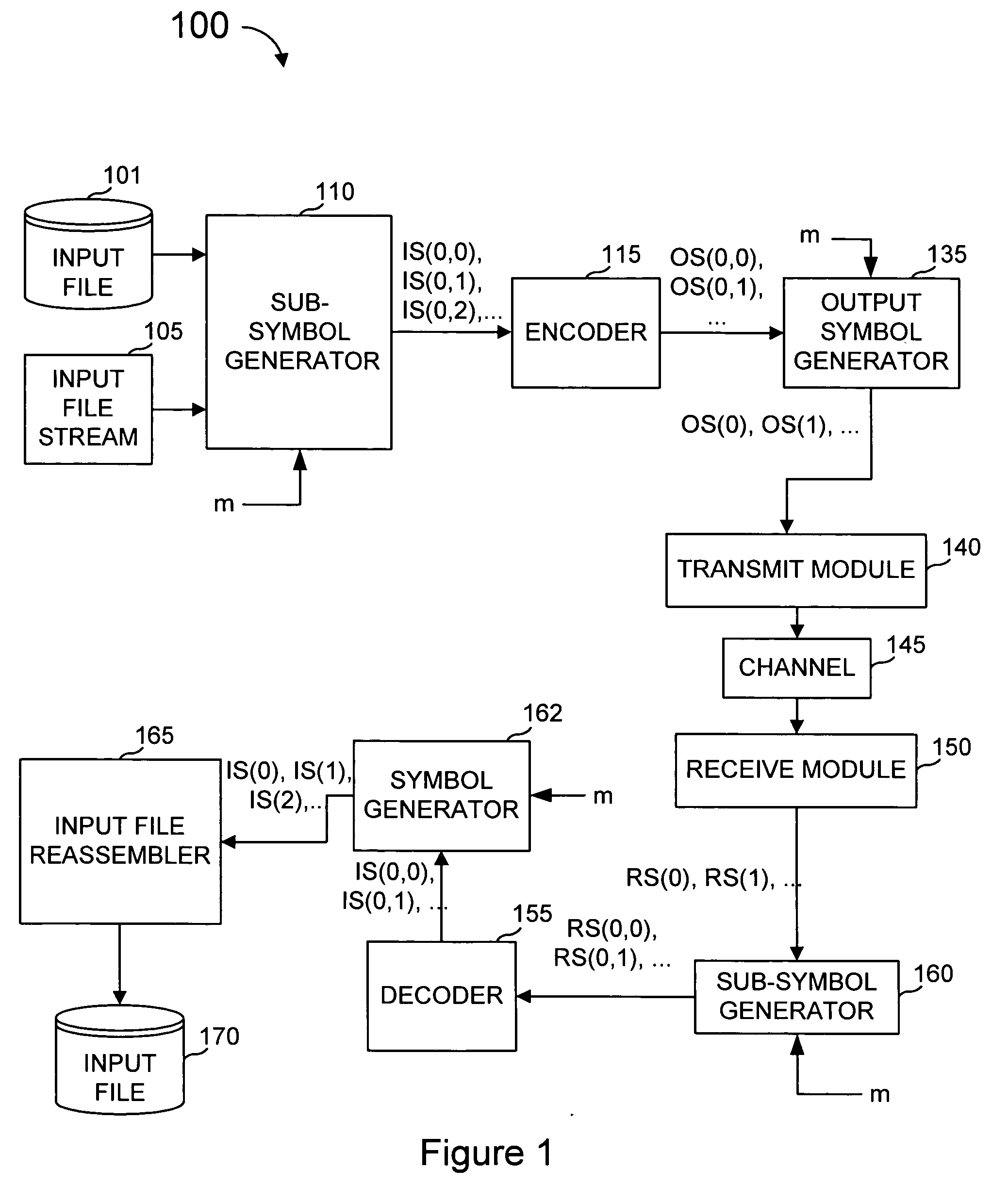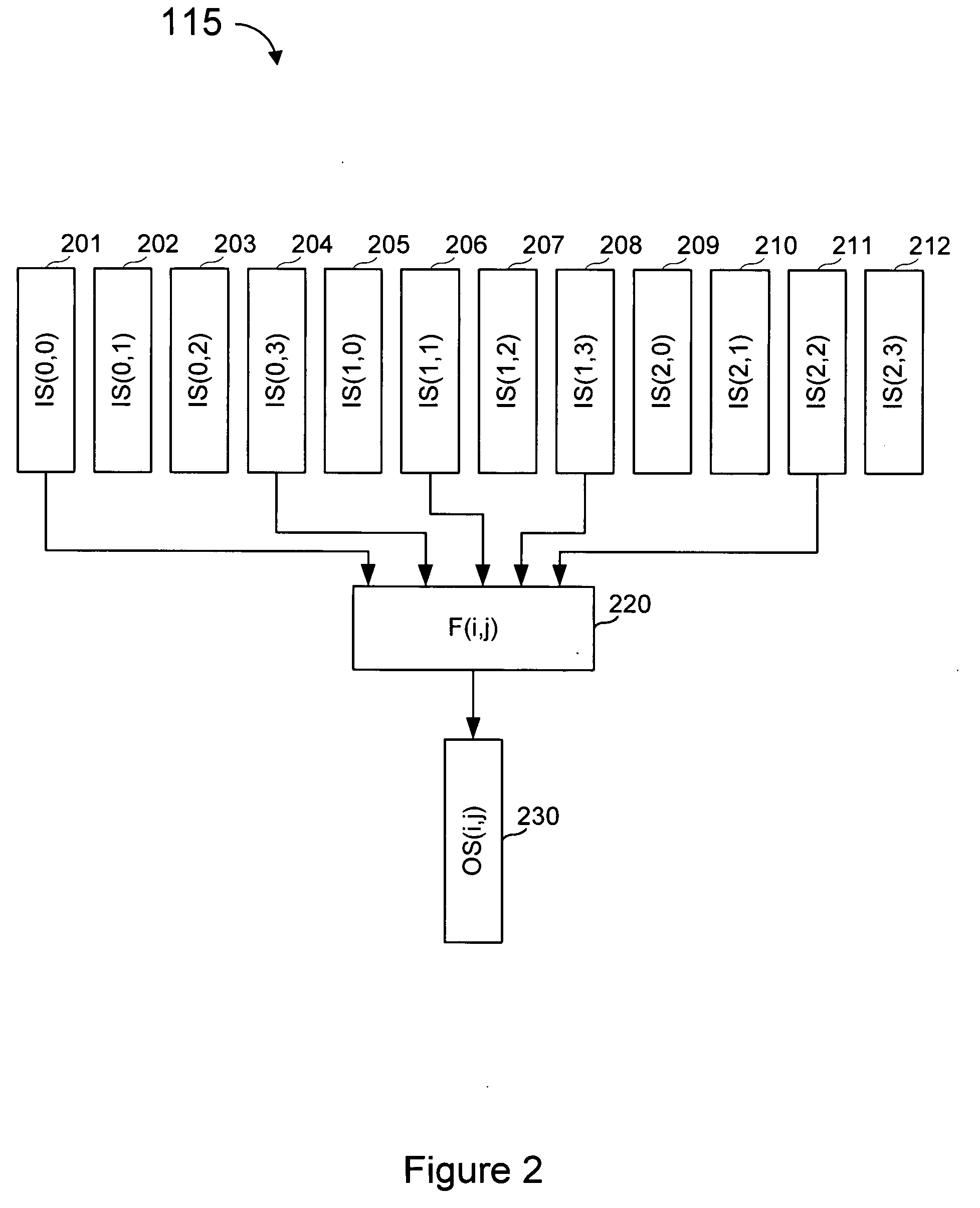Protection of data from erasures using subsymbol based codes
a technology of data erasure and subsymbol, applied in the direction of coding, code conversion, instruments, etc., can solve the problems of estimating the loss of packets, deemed lost packets, and estimating the cost of overhead efficiency, so as to reduce computational effort and cost a small amount of overhead efficiency
- Summary
- Abstract
- Description
- Claims
- Application Information
AI Technical Summary
Benefits of technology
Problems solved by technology
Method used
Image
Examples
Embodiment Construction
[0034] In the examples described herein, a coding scheme denoted as “subsymbol based coding” is described, preceded by an explanation of the meaning and scope of various terms used in this description.
[0035] An encoder is a software process, hardware apparatus, combination, or the like that receives input data from a file, stream, or other input data source and encodes that data such that effects on the data that a channel might make can be redressed by a decoder at the other end of the channel such that the decoder can regenerate the original data to whatever accuracy is needed.
[0036] With subsymbol based coding, output symbols are generated by the sender from the input file as needed. Each output symbol comprises one or more subsymbols wherein at least one output symbol comprises at least two subsymbols. Each subsymbol within an output symbol is generated by performing computational operations on subsymbols of the symbols comprising the input file, using encoder or decoder softw...
PUM
 Login to View More
Login to View More Abstract
Description
Claims
Application Information
 Login to View More
Login to View More - R&D
- Intellectual Property
- Life Sciences
- Materials
- Tech Scout
- Unparalleled Data Quality
- Higher Quality Content
- 60% Fewer Hallucinations
Browse by: Latest US Patents, China's latest patents, Technical Efficacy Thesaurus, Application Domain, Technology Topic, Popular Technical Reports.
© 2025 PatSnap. All rights reserved.Legal|Privacy policy|Modern Slavery Act Transparency Statement|Sitemap|About US| Contact US: help@patsnap.com



